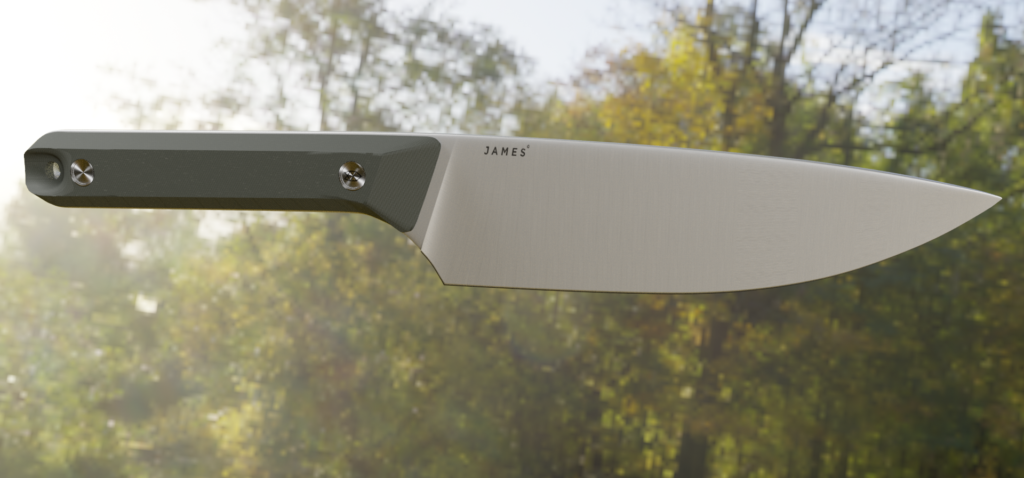
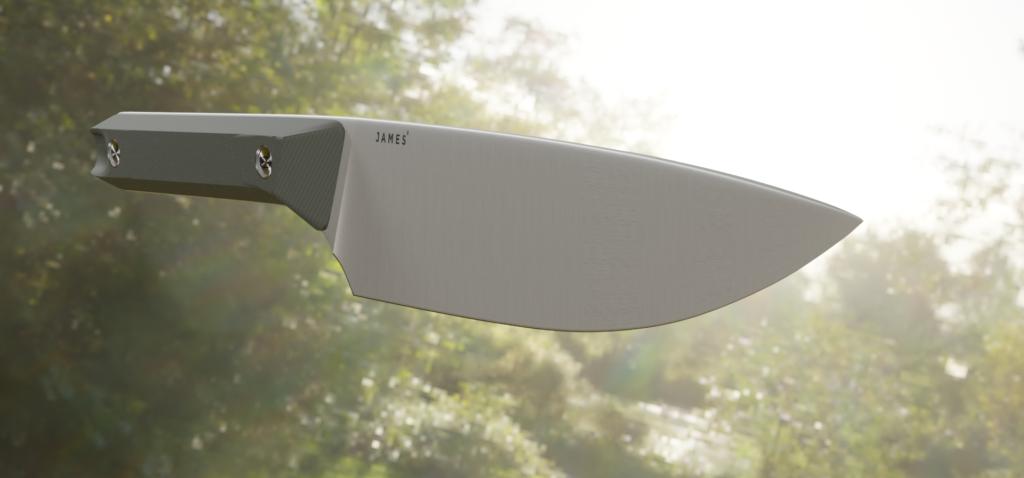
For my diy assignment, I picked a knife.
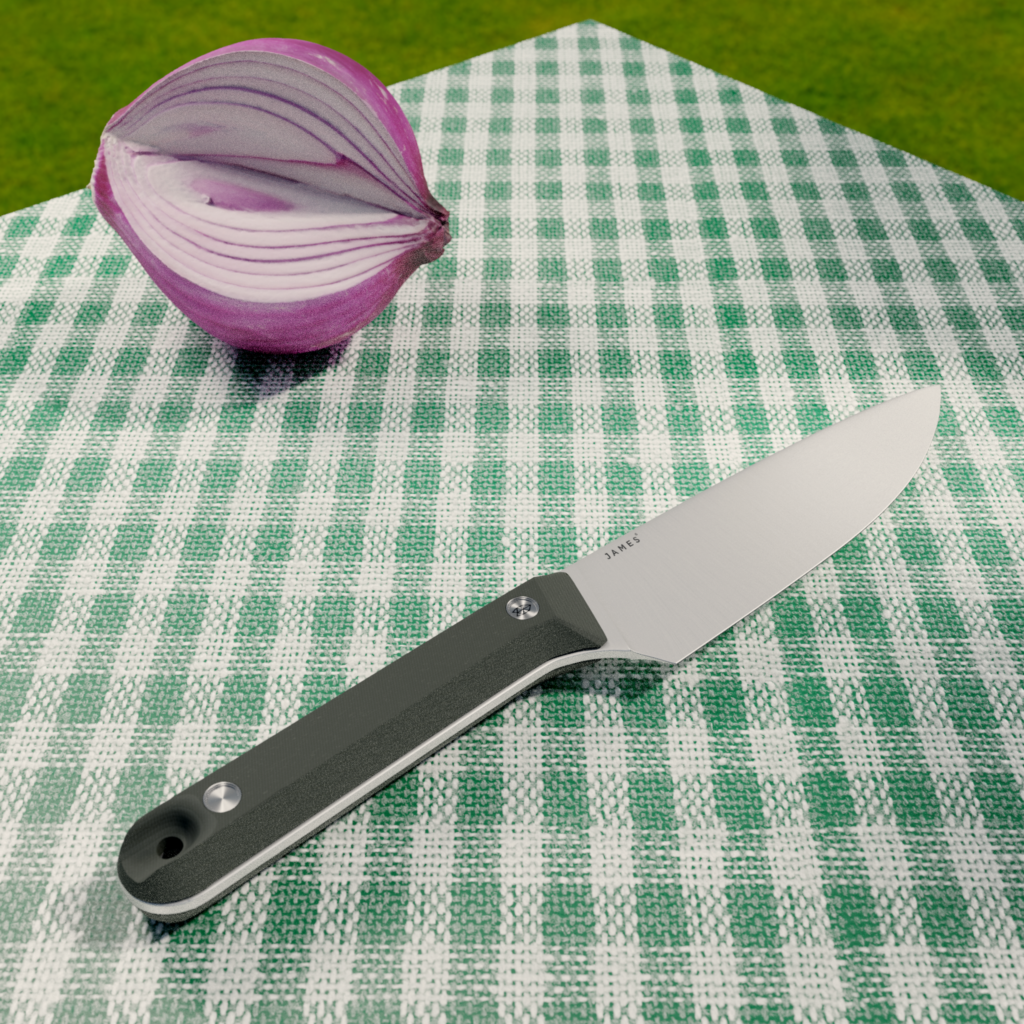
A little picnic and a snack.
Hopefully this looks realistic enough. It’s modeled from photographs of a Chefs knife that is sized for travelling.


For my diy assignment, I picked a knife.

A little picnic and a snack.
Hopefully this looks realistic enough. It’s modeled from photographs of a Chefs knife that is sized for travelling.
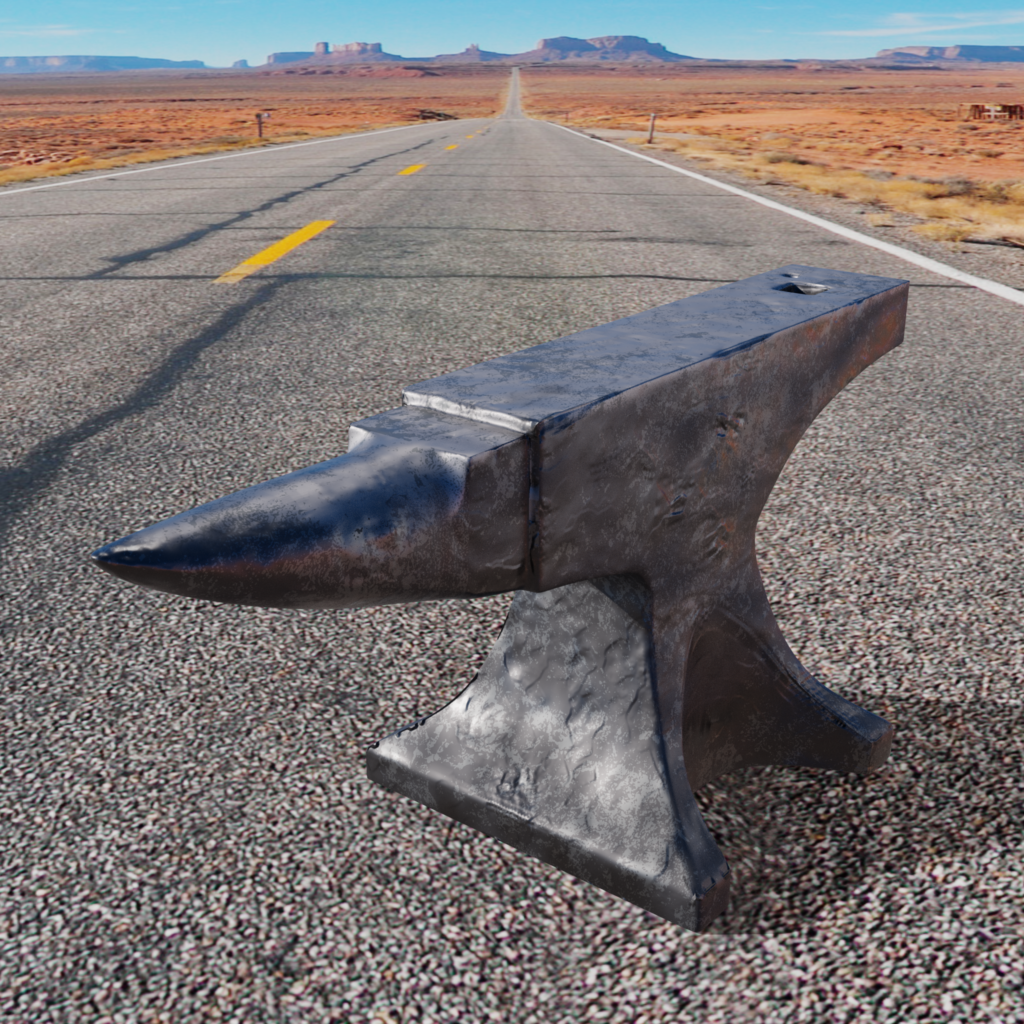
On the roadway.

The Final Part of this is adding in a base color. I used a metal that was rusty and changed it with the Color Ramp to greys. A mask is used to make the top of the anvil have a different texture. The Brush lets the blending between the side and top work smoother. The other texture is another shader, and the new Texture Paint Image is the factor for the mix shader. You can blend Textures with a mixRGB node.
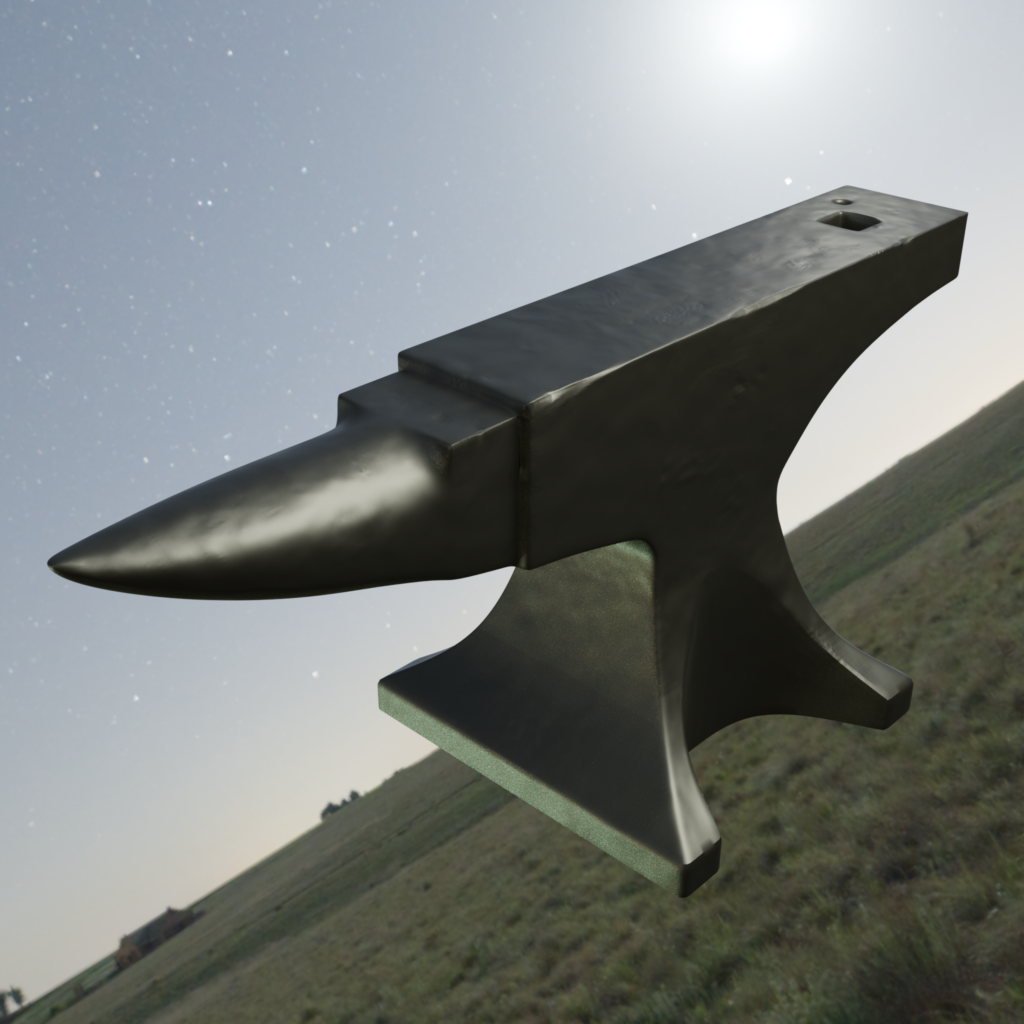
This is the Anvil banged up.
Sculpting Notes:
For the slight pounding texture, I used the Displacement modifier: cloud texture. In Sculpture mode, I clicked many Hammer Bangs. The cloud texture brush is used for gritty bumps. I tried not to make too many surface deformations. Why is everything in this lesson made to be old and used?
The sculpted object was then Baked into the unsculpted object. When the normal map is placed into the “smooth” anvil, It went from 430,054 triangles, down to 133,056, while keeping the same look.
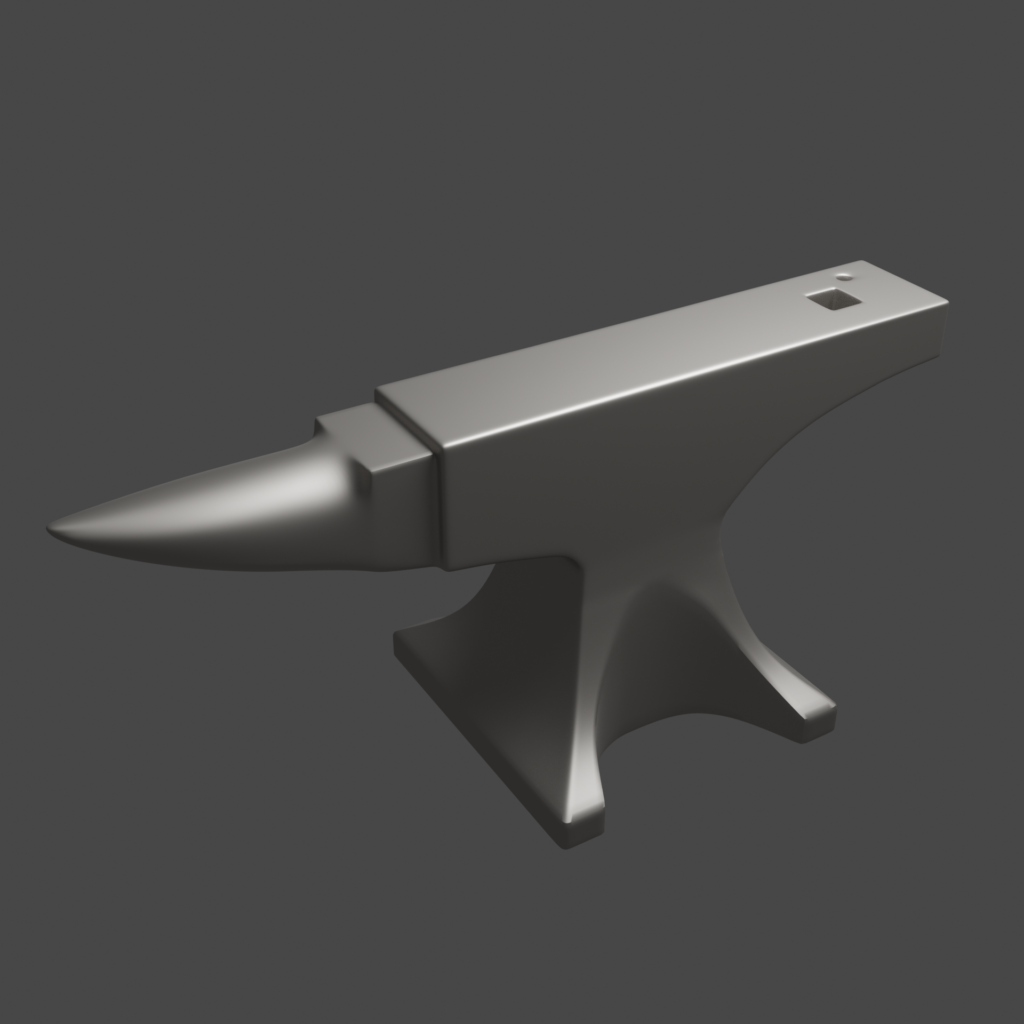
This anvil is the next lesson. It’s called texturing, but this is the modelling step.
Notes:
The Boolean modifier messes up the “clean” mesh of 4 vertices.
“G” x2 will slide the selection along the edge (vertex slide). “M” merge by distance.
This eliminates some extra geometry that can be introduced by loop cuts.
Loop Cut: on odd curves: “E” and “F” will help it conform to the different sides.
The horn was the hardest. The longitudinal loop cuts (for the Hardy Hole) did end up interfering with the edges. I’m still not sure how to eliminate some Loop Ring parts and terminate them into quads. (I just found Don Newman’s Quad junction Cheat Sheet.)
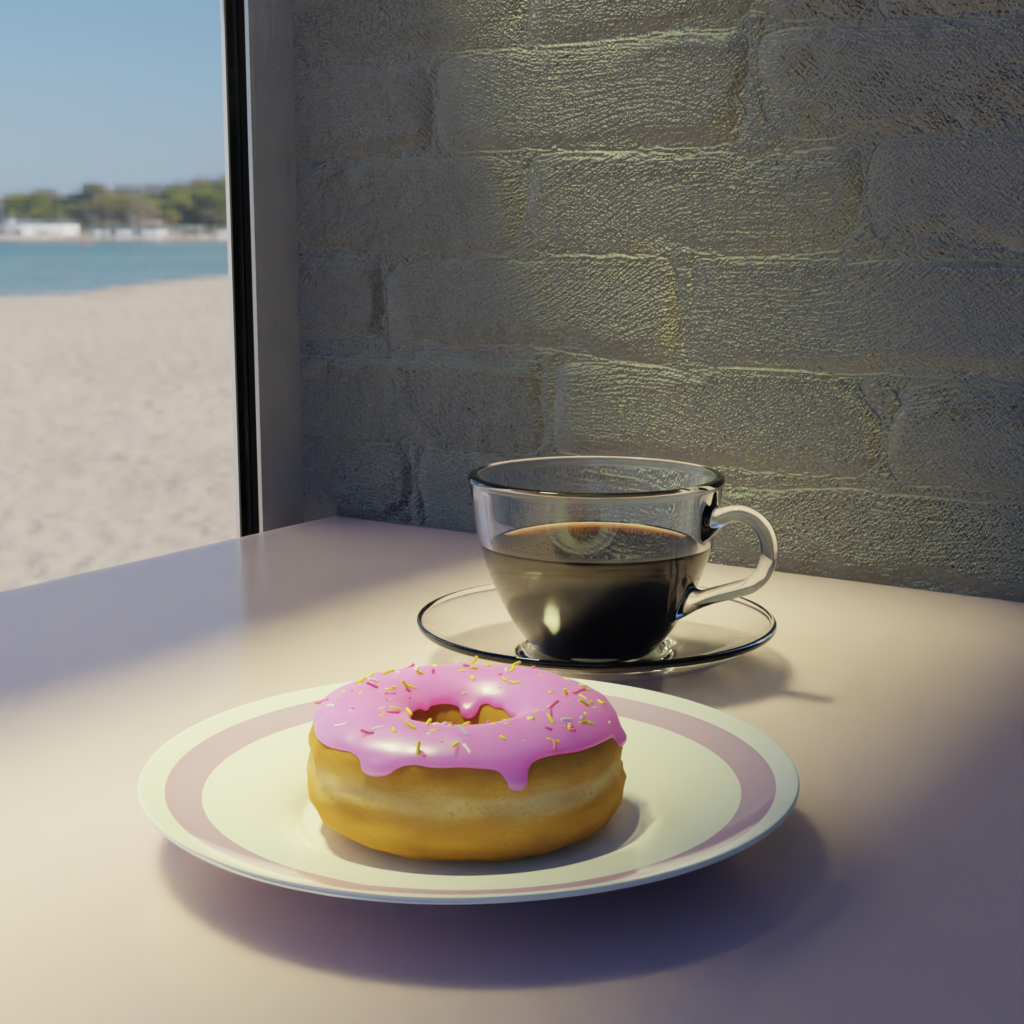
Sun strip through a skylight.
Learning Notes:
Direction creates shadow which gives form. front light flattens. down on face emphasize nose cheeks lips eyes.
Size: smaller bulb throws sharper shadows. shape of light affects specular shape.
Color: warm, cold. time of day. trick: mix warm focus with cool ambiance.
Readability: object separating (rim light). false color is exposure: grey is mid value. fill light to bring out parts that the main would blow out or can’t show. more readability can been the naturalness.
Emphasis: brightness needs shadows. lume fall off is non-linear.
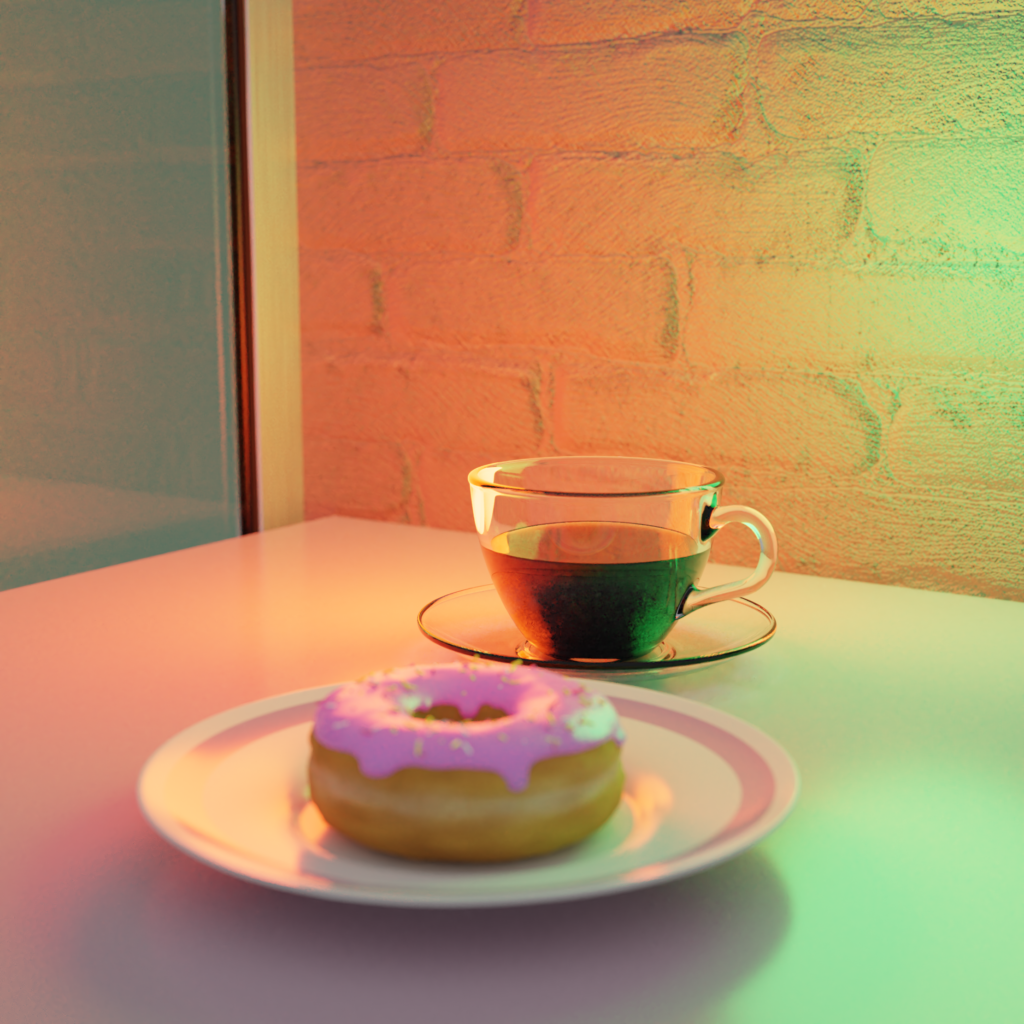
Some artificial lighting.

I tried to make the coffee the focus, without blur. Spotlight on the cup, and a low power black hole light on the donut.
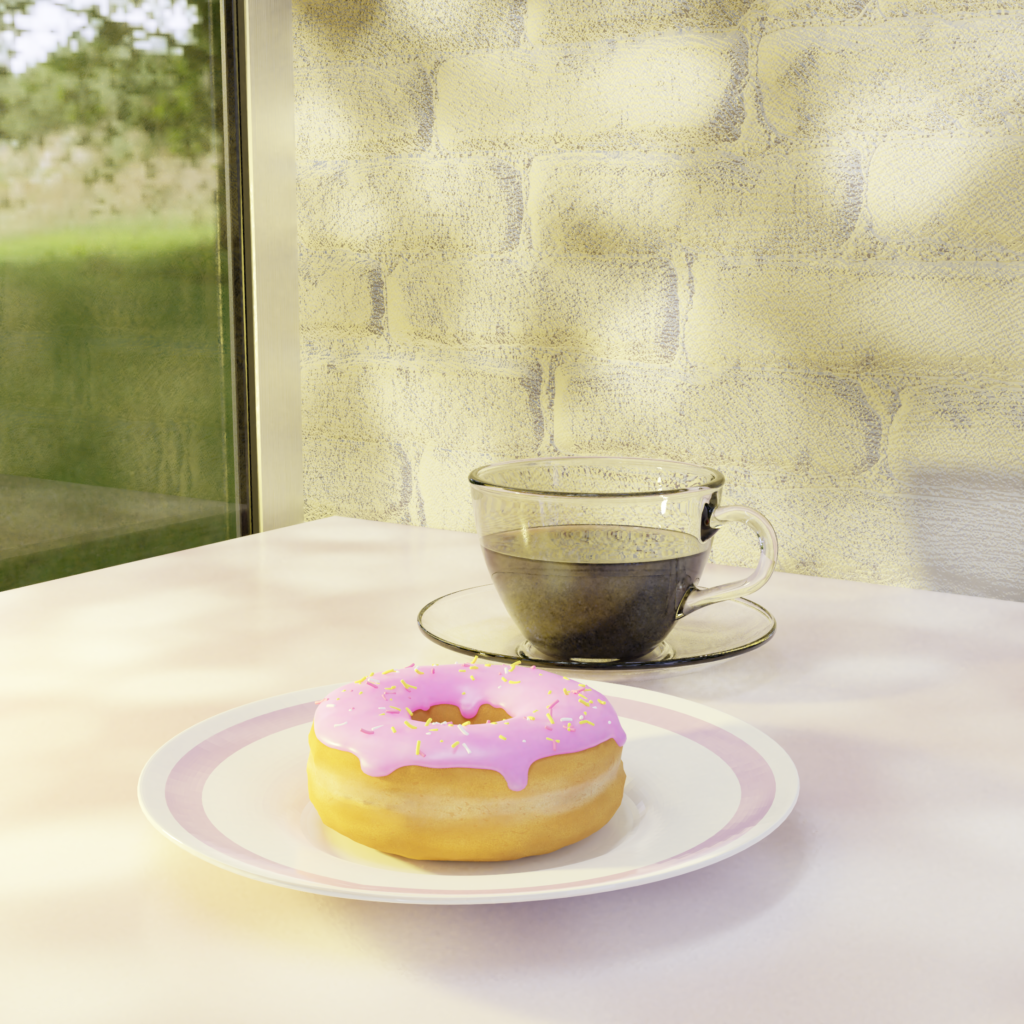
A sunny scene under some trees (leaf shadows).
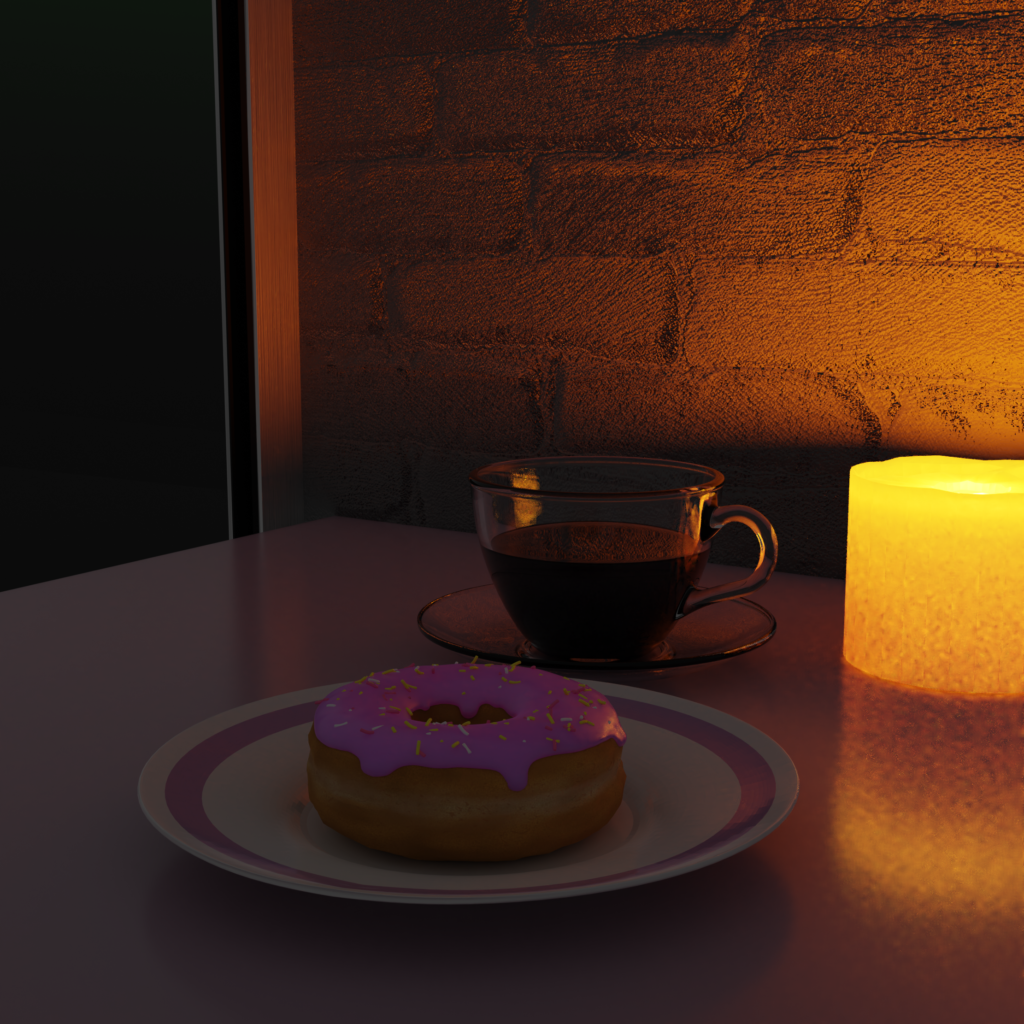
By Candle light. It’s an LED light.
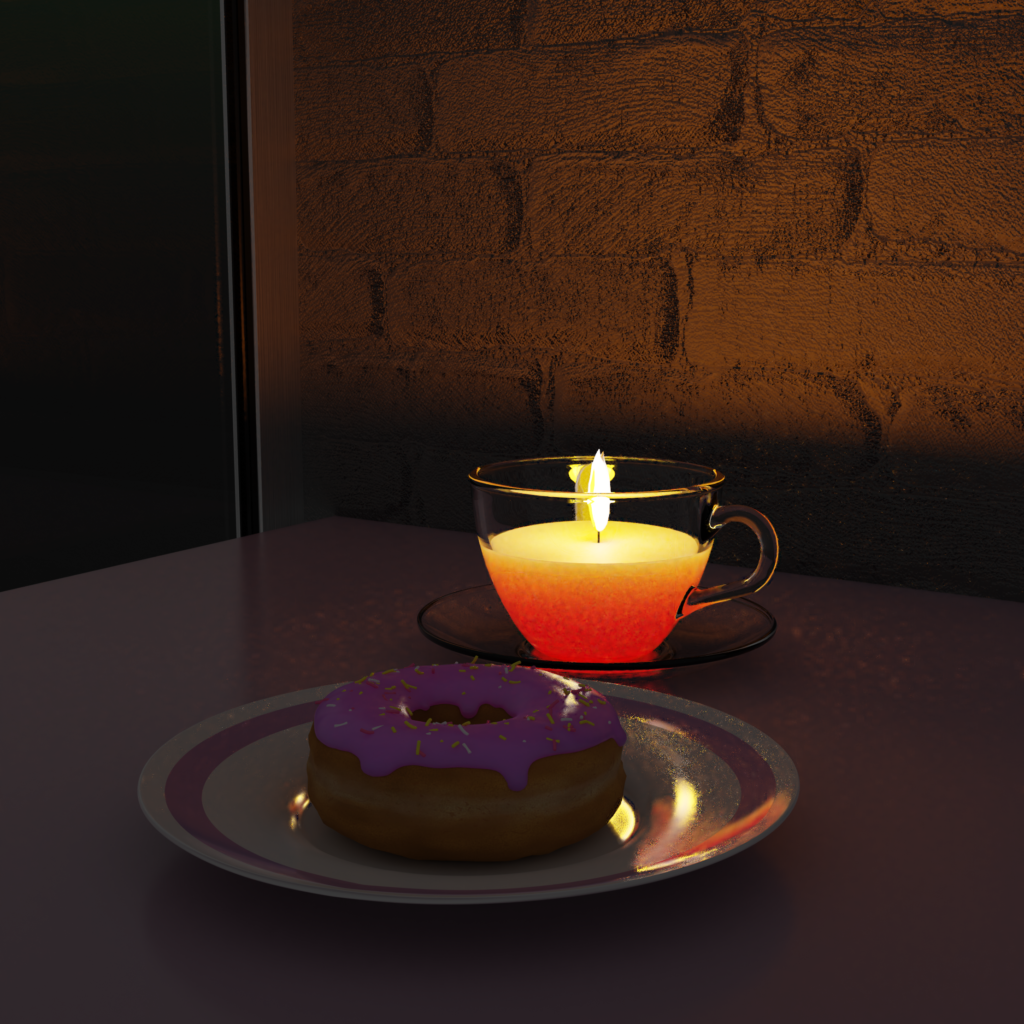
But then I thought to put the candle into the cup. And then I noticed the shadow the cup threw. Light does not go through glass.
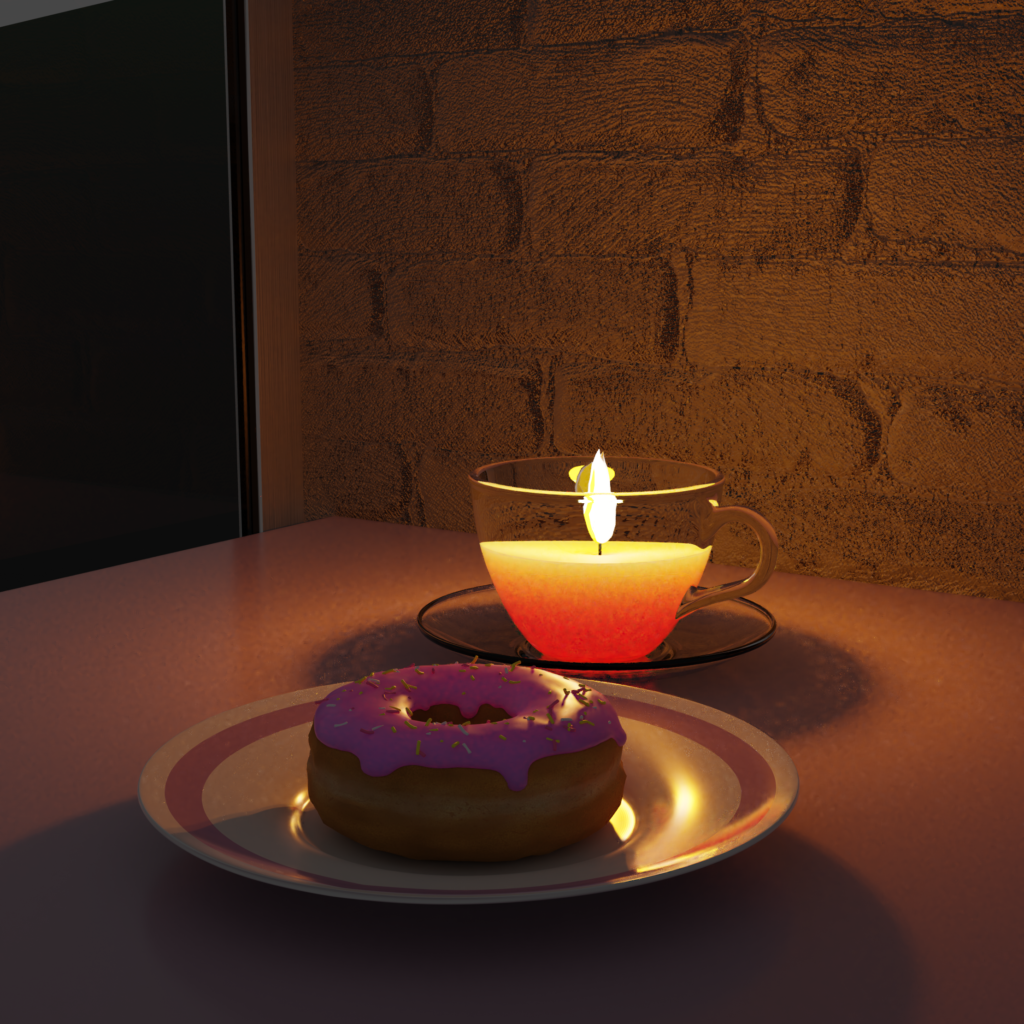
Here’s the quick work around with a mix of other shaders and light rays as factors.
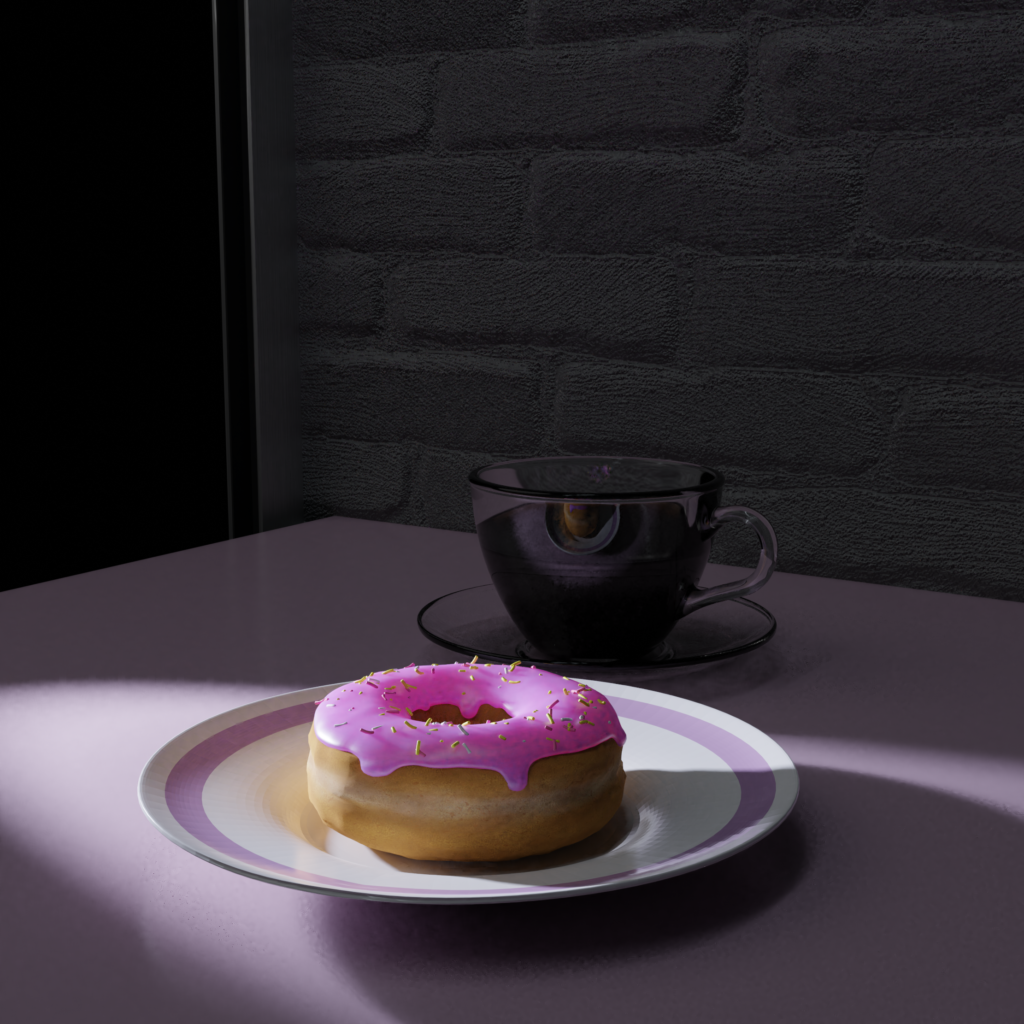
Relighting the Donut scene is the next task. The first one is a flashlight through the window.
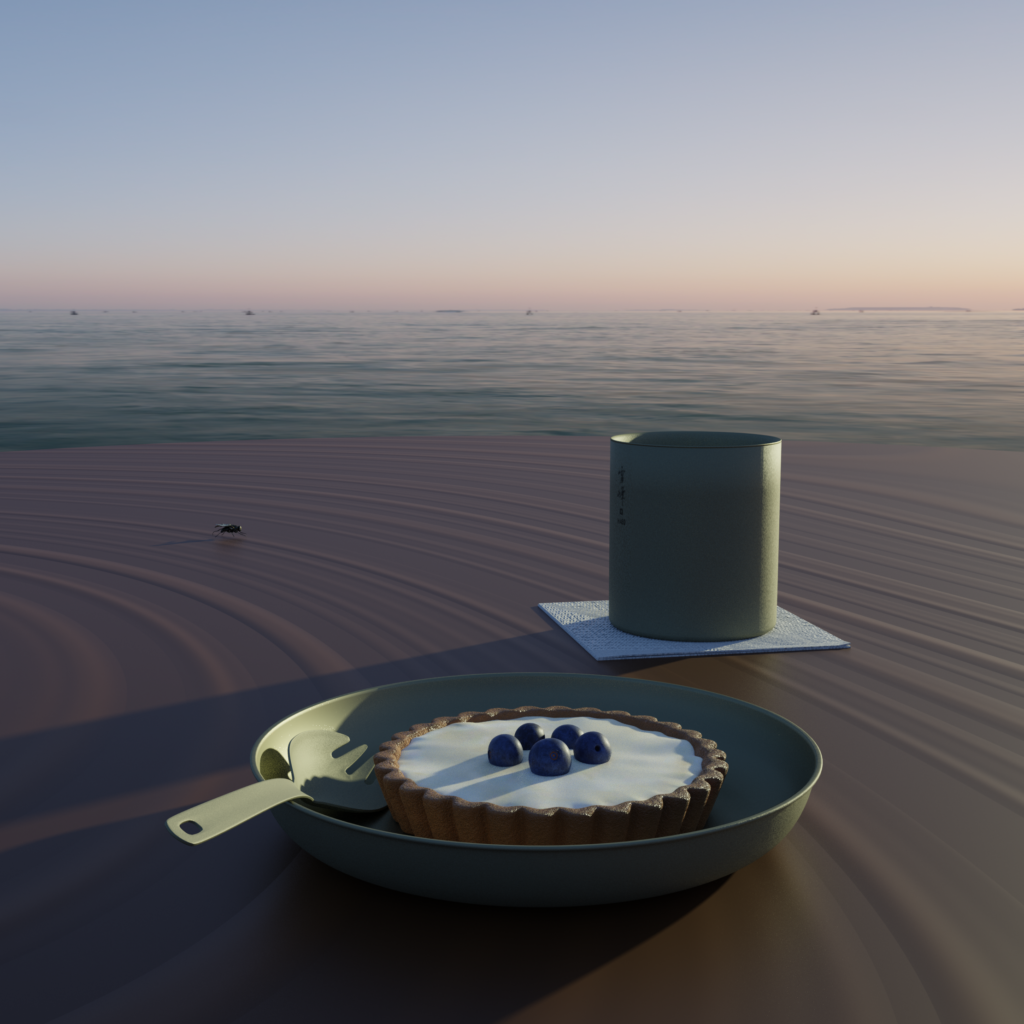
I went ahead and made the spork. The sun angle changed. I rendered it in Cycles, just for the better shadows but had to lower the texture strength on the titanium.